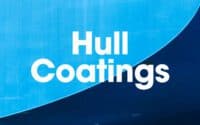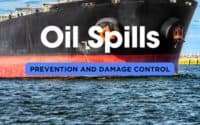Checklist: Inspecting and Replacing Ship Mooring Lines
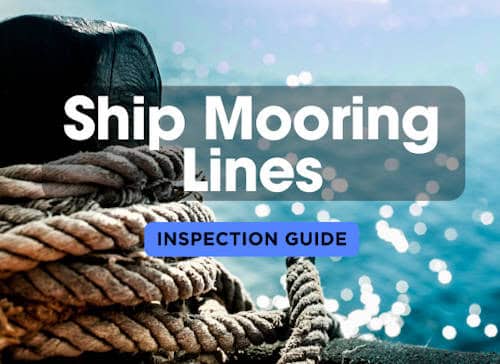
Mooring lines are the lifelines that secure a vessel to its berth, ensuring the safety of the ship, its crew, and the surrounding environment. Regular inspections of mooring lines are crucial for several reasons:
- Safety: Ensuring the integrity of mooring lines is vital for preventing accidents that could lead to the vessel drifting, causing collisions, or damaging port infrastructure.
- Compliance: Many maritime regulations require routine inspections of mooring equipment to meet safety standards. Non-compliance can result in fines, detentions, or other penalties.
- Operational Efficiency: A well-maintained mooring system reduces the risk of delays during docking and undocking, ensuring smooth and timely operations. Identifying potential issues before they become critical can prevent costly downtime and repairs.
Quick Inspection Checklist
Download Quick Inspection Checklist in MS Word
| ShipUniverse: Mooring Line Inspection Checklist | |||
|---|---|---|---|
| Inspection Area | What to Look For | Pass/Fail Criteria | Notes |
| Surface |
|
|
|
| Splices |
|
|
|
| Terminations |
|
|
|
| Diameter |
|
|
|
| Flexibility |
|
|
|
Frequency of Inspections
The frequency of mooring line inspections should be determined by several factors, including the type of vessel, the environment in which it operates, and the frequency of use:
- Type of Vessel: Larger vessels like bulk carriers and RoRo ships, which handle significant loads, should have more frequent inspections due to the higher stresses on mooring lines.
- Environmental Conditions: Vessels operating in harsh environments—such as areas with extreme weather conditions, high UV exposure, or frequent saltwater contact—should have their mooring lines inspected more often.
- Usage Patterns: Ships that frequently dock and undock or are subjected to heavy mooring loads should schedule inspections more regularly, as the wear and tear on the lines will be greater.
As a general guideline, mooring lines should be inspected at least once every three to six months, with more frequent checks in adverse conditions or after any unusual strain on the lines.
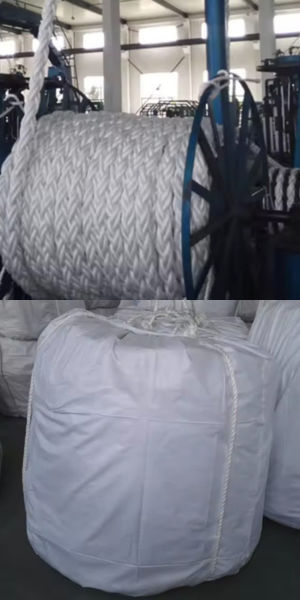
Factory Direct Pricing = Huge Savings
* High-end cranes trusted by top fleets.
* Fully customizable according to your specs.
* Marine cranes, including gantry, deck, knuckle boom, telescopic, and jib cranes, to meet all your maritime needs.
| Mooring Line | 48mm | 56mm | 64mm | 72mm |
|---|---|---|---|---|
| 8 Strand Polypropylene | $2.00 / kg | $2.10 / kg | $2.30 / kg | $2.40 / kg |
Preparation for Inspection
Gathering Necessary Tools
To conduct a thorough inspection of mooring lines, the following tools and equipment are essential:
- Gloves: Protect hands from sharp fibers or potential contaminants on the mooring lines.
- Measuring Tape: Measure the diameter of the lines to check for any reduction in thickness, which may indicate wear.
- Marine Magnifying Glass: Aid in identifying small cuts, abrasions, or other signs of damage that may not be visible to the naked eye.
- Inspection Logbook: Record findings from the inspection, including any areas of concern and recommendations for maintenance or replacement.
- Calipers: Provide precise measurements of the line’s diameter to assess any reduction in strength.
- Camera: Document the condition of the mooring lines with photographs for future reference and comparison.
Safety Precautions
When inspecting mooring lines, safety should be the top priority. Proper safety protocols must be followed to protect the inspector and ensure a thorough examination:
- Personal Protective Equipment (PPE): Inspectors should wear appropriate PPE, including gloves, safety glasses, and steel-toed boots, to protect against injury from damaged lines or heavy equipment.
- Secure the Area: Ensure that the area around the mooring lines is clear of obstacles and that the ship is stable. If the ship is docked, confirm that all lines are under minimal tension to avoid sudden movements.
- Use of Safety Harnesses: When working near the edge of the vessel or on elevated platforms, inspectors should use safety harnesses to prevent falls.
- Communication: Maintain clear communication with the crew to ensure that everyone is aware of the inspection process and that no other operations interfere with the inspection.
| ShipUniverse: Mooring Line Inspection – Step-by-Step Guide | ||
|---|---|---|
| Step | Action | Details |
| 1. Initial Preparation | Gather tools and safety equipment | Ensure you have gloves, a measuring tape, calipers, a magnifying glass, an inspection logbook, a camera, and proper PPE (gloves, safety glasses, steel-toed boots). |
| 2. Visual Inspection | Examine the surface of the mooring lines | Check for visible signs of damage such as cuts, abrasions, fraying, or flattening. Look for discoloration, which can indicate UV damage or chemical exposure. |
| 3. Feel for Irregularities | Run your hands along the entire length of the line | Feel for any inconsistencies such as hard spots, thinning areas, or internal damage that might not be visible. This can indicate issues like core degradation. |
| 4. Measure Diameter | Check the thickness of the line | Use calipers to measure the diameter at several points along the line. Compare these measurements to the original specifications to determine any loss of thickness, which could compromise strength. |
| 5. Inspect Splices and Fittings | Examine the integrity of splices and attached hardware | Check splices, thimbles, shackles, and other fittings for wear, corrosion, or any signs of weakness. Ensure that splices are tight and that fittings are securely attached. |
| 6. Assess Elasticity | Test the line’s flexibility | Bend the line to see if it still retains its original elasticity. A loss of flexibility may indicate that the fibers are becoming brittle, which can lead to breakage under stress. |
| 7. Check for Environmental Damage | Identify signs of exposure-related wear | Look for evidence of damage from environmental factors such as UV rays, saltwater corrosion, or chemical spills. This could manifest as hardening, brittleness, or deep discoloration. |
| 8. Document Findings | Record the inspection results | Use the inspection logbook to note any issues discovered during the inspection. Take photographs of any areas of concern for future comparison and to provide a visual record. |
| 9. Make Recommendations | Determine next steps based on findings | If significant wear or damage is found, recommend repair or replacement of the line. If the line is in good condition, schedule the next inspection according to the ship’s maintenance plan. |
| 10. Review Safety Precautions | Ensure that safety protocols were followed | Verify that all safety procedures were adhered to during the inspection, including the use of PPE and securing the inspection area. Ensure clear communication was maintained with the crew. |
Signs of Wear and the Causes
Understanding the common signs of wear and their underlying causes is essential for preventing failures that could result in costly accidents or downtime. By identifying these issues early, ship operators can take proactive measures to maintain the integrity of their mooring systems, ensuring the vessel remains securely moored under all conditions.
| ShipUniverse: Common Signs of Wear and Their Causes | ||
|---|---|---|
| Sign of Wear | Possible Causes | Impact on Performance |
| Abrasion |
|
|
| Fraying |
|
|
| Discoloration |
|
|
| Hardening |
|
|
| Corrosion |
|
|
When It’s Time to Replace Mooring Lines on Your Ship
Replacing mooring lines before they fail is essential to maintaining the safety and operational efficiency of your ship. Here’s how to know when it’s time to replace them:
Inspection Results: Regular inspections that reveal multiple areas of concern, such as the ones listed above, are a strong indicator that the line should be replaced rather than repaired.
Visible Damage:
Fraying or Cuts: Any visible fraying, cuts, or broken strands are clear signs that the line’s structural integrity is compromised.
Abrasion Marks: Significant abrasion, especially at high-stress points, indicates the line has been weakened and is at risk of failure.
Loss of Diameter:
Thinning: If the line’s diameter has noticeably reduced compared to its original size, it’s time for a replacement. Thinning indicates that the line’s strength has diminished.
Stiffness and Hardening:
Reduced Flexibility: When a mooring line becomes stiff or hard to the touch, it’s a sign that the fibers have deteriorated, which can lead to sudden breakage under stress.
Discoloration:
UV Damage: Faded or discolored lines, particularly those exposed to sunlight, may have suffered UV damage. UV exposure weakens synthetic fibers over time.
Chemical Exposure: Lines exposed to harsh chemicals can become brittle and lose their strength, often indicated by discoloration or surface changes.
Corrosion of Metal Fittings:
Rust and Corrosion: If the metal fittings, such as shackles or thimbles, show signs of rust or corrosion, it’s not only the fittings that need attention; the entire line might need replacing to ensure safety.
Loss of Elasticity:
Poor Shock Absorption: A line that no longer stretches under load and fails to absorb shocks is at a higher risk of snapping, especially under sudden stress.
Age:
Service Life: Even if a mooring line appears in good condition, it should be replaced after its recommended service life, typically between 5 to 10 years, depending on usage and environmental exposure.
Failed Inspections:
Recurrent Issues: If a mooring line consistently fails inspection or exhibits recurring problems despite repairs, it’s a clear sign that the line has reached the end of its serviceable life and should be replaced.
Compromised Safety Margins: If inspection results indicate that the line no longer meets the safety standards required for your vessel’s operations, replacement is necessary to avoid potential accidents or operational failures.
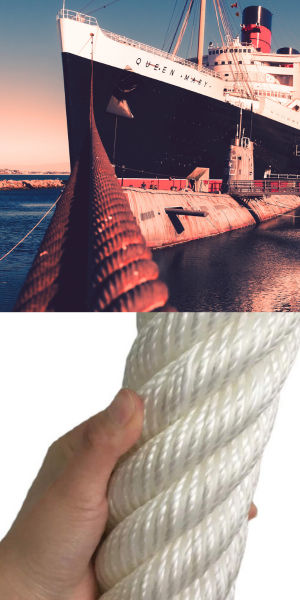
Factory Direct Pricing = Huge Savings
* High quality lines that are trusted by top fleets.
* Fully customizable according to your specs.
* Steel wire rope, PP, PES, Synthetic, in all sizes.
| Mooring Line | 48mm | 56mm | 64mm | 72mm |
|---|---|---|---|---|
| 8 Strand Polypropylene | $2.00 / kg | $2.10 / kg | $2.30 / kg | $2.40 / kg |

Do you have any feedback or additional insights? Please reach out to editor @ shipuniverse.com

